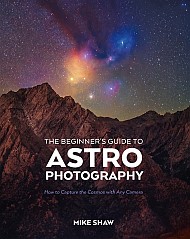Astronomy
COP30 keeps climate cooperation alive but hanging by a thread
Raccoons Are Changing, COP30 In Brazil, and New Fluoride Research
Your Monday news roundup, in audio form, including the cutest raccoons, COP30 takeaways and more on a new study on fluoride and cognitive decline.
Final call to apply for ESA Internships 2026!
The clock is ticking! Applications for the ESA Student Internship Programme 2026 close on 30 November. This is your chance to take your first step into the world of space.
NASA Finally Releases Images of 3I/ATLAS Taken by Its Missions at Mars
Two orbiters and a rover captured images of the interstellar object — from the closest location any of the agency’s spacecraft may get — that could reveal new details.
Blue Origin to Build a "Super Heavy" Rocket to Compete with Starship
Blue Origin announced a series of upgrades to New Glenn designed to increase payload performance and launch cadence, while enhancing reliability. The enhancements span propulsion, structures, avionics, reusability, and recovery operations, and will be phased into upcoming New Glenn missions beginning with NG-3.
Extinct animals in Prehistoric Planet: Ice Age make it a must-watch
Extinct animals in Prehistoric Planet: Ice Age make it a must-watch
New Research Suggest Earth and Theia were Neighbors Before They Collided
About 4.5 billion years ago, the most momentous event in the history of Earth occurred: a huge celestial body called Theia collided with the young Earth. How the collision unfolded and what exactly happened afterward has not been conclusively clarified. What is certain, however, is that the size, composition, and orbit of Earth changed as a result—and that the impact marked the birth of our constant companion in space, the moon.
Is the Universe Infinite?
The surface of the Earth is finite. We can measure it. If it was expanding, then its size would grow with time. And once again, good ol’ Earth helps us understand what the universe might be doing beyond our observable horizon.
The Paris Climate Agreement Is Turning 10—These 5 Charts Show What Progress We’ve Made
The 2015 Paris Agreement forged a path for the world to stave off the worst climate change scenarios. Here’s where we stand 10 years later
How a Detergent Ingredient Unlocked the Potential of Nanotubes
Material science plays a critical role in space exploration. So many of the challenges facing both crewed and non-crewed missions come down to factors like weight, thermal and radiation tolerance, and overall material stability. The results of a new study from Young-Kyeong Kim of the Korea Institute of Science and Technology and their colleagues should therefore be exciting for those material scientists who focus on radiation protection. After decades of trying, the authors were able to create a fully complete “sheet” of Boron Nitride Nanotubes (BNNTs).
Do Brain-Decoding Devices Threaten People's Privacy?
Ethicists say AI-powered advances will threaten the autonomy of people who use neurotechnology
AI Cracks Galaxy Simulation
Scientists have achieved a breakthrough that seemed impossible just months ago, they have simulated our entire Milky Way galaxy down to each of its 100 billion individual stars. By combining artificial intelligence with supercomputer power, researchers created a model that captures everything from galactic arms to the explosive deaths of individual stars, completing in days what would have taken conventional simulations 36 years. This fusion of AI and physics represents a significant shift in how we model complex systems, with implications reaching far beyond astronomy.
Ancient Underground Water Suggests Mars May Have Been Habitable Longer than Previously Thought
Scientists from New York University Abu Dhabi (NYUAD) have uncovered new evidence that water once flowed beneath the surface of Mars, revealing that the planet may have remained habitable for life much longer than previously thought.
Yes, the Universe Can Expand Faster Than Light
An expanding universe complicates this picture just a little bit, because the universe absolutely refuses to be straightforward.
How to Imagine an Expanding Universe
I honestly don’t have a decent analogy for you to explain how the universe is expanding without a center and without an edge. It just does, whether we can wrap our minds around it or not. But I CAN give you a way to think about it.
What Blind Cave Fish and Venomous Snails Can Teach Us about Diabetes
Studies of insulin, blood sugar and diabetes in other animals such as fish and dogs have already saved millions of lives and could lead to new treatments for type 1 and type 2 diabetes.
Spot Uranus at Opposition
Uranus is its closest to Earth all year on the night of November 21st, and you can find it easily in the evening sky using Sky & Telescope’s exclusive star chart.
The post Spot Uranus at Opposition appeared first on Sky & Telescope.


